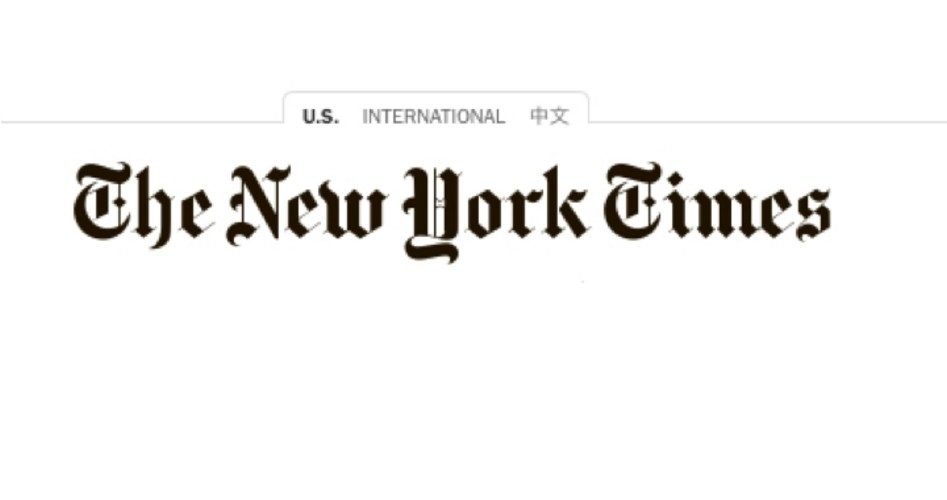
It took almost a week for Margaret Sullivan, the public editor of the New York Times, to get the story straight. An article published on Sunday, December 13 implied that American immigration officials had failed to vet Tashfeen Malik, one of the San Bernardino shooters. And the implication was that because of that, Americans are dead.
The trouble was, the story was wrong.
Sunday’s article opened:
Tashfeen Malik, who with her husband carried out the massacre in San Bernardino, Calif., passed three background checks by American immigration officials as she moved to the United States from Pakistan. None uncovered what Ms. Malik had made little effort to hide — that she talked openly on social media about her views on violent jihad.
She said she supported it. And she said she wanted to be a part of it.
As Sullivan explained in what appeared to be an indirect apology for sloppy reporting: “Ms. Malik had not posted ‘openly’ on social media. She had written emails; she had written private messages, not visible to the public; and she had written [them] on a dating site.”
It took the Times until Thursday to post an “editor’s note” — not a “correction” — that the implication was wrong. On Friday she said, on her Public Editor’s Journal, that she had spoken to all the responsible parties, and concluded that something must be done:
I talked on Friday to the executive editor, Dean Baquet; to one of his chief deputies, Matt Purdy; and to the Washington editor, Bill Hamilton, who edited the article.
All [of them] described what happened as deeply troubling. Mr. Baquet said that some new procedures need to be put in place, especially for dealing with anonymous sources, and he said he would begin working on that immediately.
Baquet also rejected the idea that the story was based upon a political agenda, saying, “There’s no reason to think that’s the case.”
Skeptics are having trouble with that denial, especially when it was learned that the two journalists responsible for the story, Matt Apuzzo and Michael Schmidt, had also overstepped similar bounds when reporting in July that the Department of Justice was initiating a criminal investigation into Hillary Clinton’s use of her e-mail server to send and receive e-mails containing state secrets.
So outraged was the Clinton campaign that Jennifer Palmieri, communications director for Hillary for America, sent a 1,900-word letter of protest to the aforementioned Dean Baquet, expressing “our campaign’s grave concern with the Times’ publication of an inaccurate report related to Hillary Clinton and her email use.” She added:
I feel obliged to put into context just how egregious an error this story was.… [The Times] rushed to put an erroneous story on the front page charging that [Clinton] was the target of a criminal referral to federal law enforcement….
This problem was compounded by the fact the Times took an inexplicable, let alone indefensible, delay in correcting the story and removing “criminal” from the headline and text of the story….
Mrs. Clinton is not the target of a criminal referral made by the State Department’s and Intelligence Community’s Inspectors General, and second, the referral in question was not of a criminal nature at all.
This wasn’t enough for the angry Ms. Palmieri:
This was, to put it mildly, an egregious breach of the process that should occur when a major newspaper like the Times is pursuing a story of this magnitude…. Key details went uninvestigated in the Times’ rush to publish these erroneous allegations against Mrs. Clinton.
When David Brock, the founder of Media Matters (a progressive watchdog usually focused on conservatives), joined the chorus of unhappy people criticizing the Times, he targeted the same Margaret Sullivan for sloppy reporting, or worse. In her response, Sullivan said that the reporting was “not without fault” and tried to explain away how the article made it to print without being sufficiently vetted for accuracy:
The inaccuracies and changes in the [Clinton] story were handled as they came along, with little explanation to readers, other than routine corrections.
You can’t put stories like this back in the bottle — they ripple through the entire news systems….
So it was, to put it mildly, a mess.
This is how a senior editor for a newspaper that is commonly known to be the mouthpiece for the establishment admits that her paper has made a major mistake.
The dirty little secret is that the Times, for years, has committed crimes against honest journalism. There’s the case of Walter Duranty, who used the Times to propagandize for Joseph Stalin and the Soviet Union in the 1930s and then, adding insult to injury, received a Pulitzer Prize for his work. In 2003 (70 years after the fact!), the Times hired Mark von Hagen, professor of Russian history at Columbia University, to review Duranty’s work. He concluded that his articles and reports were unbalanced and uncritical, and stated that, “For the sake of the New York Times’ honor, they should take the [Pulitzer] prize away.”
In 2003, Jayson Blair, a Times reporter, was forced to resign after he was caught plagiarizing and fabricating elements of his stories.
In 2006, the Times was criticized for taking sides in the Duke University lacrosse scandal, publishing the prosecutors’ version of the events in the highly publicized alleged rape case.
It took the Times 13 months to report on the National Security Agency’s illegal surveillance program. Former NSA officials alerted Times journalists James Risen and Eric Lichtblau of the details in November 2004, but the top brass held off publishing the story until well after the November elections, thanks to pressure from the Bush administration, publishing it instead in December 2005.
A fair question is: Just how far back has the Times catered to pressure to water down, delay, or fabricate news in order to present “all the news that’s fit to print”? In 1917, Representative Oscar Callaway of Texas told Congress:
In March, 1915, the J.P. Morgan interests, the steel, shipbuilding, and powder interests, and their subsidiary organizations, got together 12 men high up in the newspaper world and employed them to select the most influential newspapers in the United States and [a] sufficient number of them to control generally the policy of the daily press in the United States.
These 12 men worked the problem out by selecting 179 newspapers, and then began, by an elimination process, to retain only those necessary for the purpose of controlling the general policy of the daily press throughout the country. They found it was only necessary to purchase the control of 25 of the greatest papers. The 25 papers were agreed upon; emissaries were sent to purchase the policy, national and international, of these papers; an agreement was reached; the policy of the papers was bought, to be paid for by the month; an editor was furnished for each paper to properly supervise and edit information regarding the questions of preparedness, militarism, financial policies, and other things of national and international nature considered vital to the interests of the purchasers.
This contract is in existence at the present time, and it accounts for the news columns of the daily press being filled with all sorts of preparedness arguments and misrepresentations as to the present condition of the United States Army and Navy, and the possibility and probability of the United States being attacked by foreign foes.
This policy also included the suppression of everything in opposition to the wishes of the interests served. The effectiveness of this scheme has been conclusively demonstrated by the character of the stuff carried in the daily press throughout the country since March, 1915.
They have resorted to anything necessary to commercialize public sentiment and sandbag the national Congress into making extravagant and wasteful appropriations for the army and navy, under the false pretense that it was necessary. Their stock argument is “patriotism.” They are playing on every passion and prejudice of the American people” (Proceedings and Debates of the Second Session of the 64th Congress, Vol. LIV, Congressional Record of the House of Representatives, Feb. 9, 1917, pp. 2947-48).
It’s likely that for the past 100 years the Times has catered to the interests of insiders interested in promoting a particular point of view. So much so that Tom Anderson, a past member of the Council of The John Birch Society, was famous for saying that, when reading the New York Times, “I don’t even trust the page numbers!”
A graduate of an Ivy League school and a former investment advisor, Bob is a regular contributor to The New American magazine and blogs frequently at LightFromTheRight.com, primarily on economics and politics. He can be reached at [email protected].



